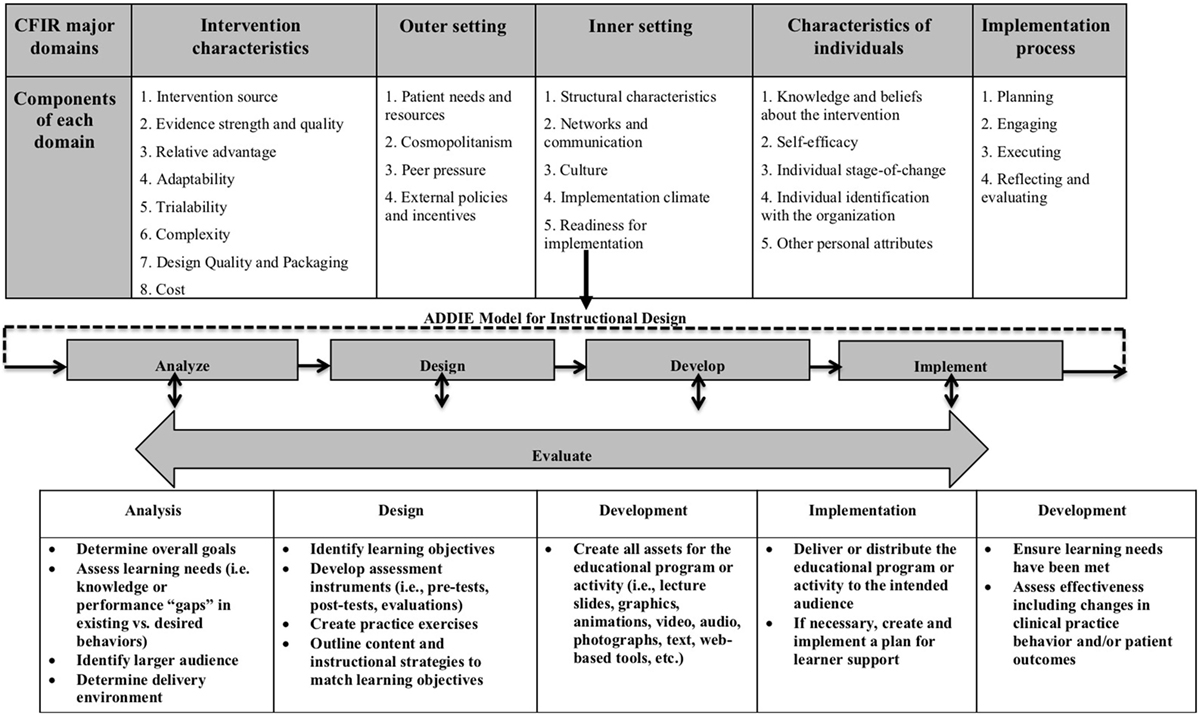Table Of Content

The designer creates a prototype of the instructional materials and tests it with learners to gather feedback. The model is flexible and can be adapted to different types of learning environments and subject matter. Most of the current instructional design models are spin-offs or variations of the ADDIE model; other models include the Dick & Carey and Kemp ISD models. One commonly accepted improvement to this model is the use of rapid prototyping. This is the idea of receiving continual or formative feedback while instructional materials are being created.

Comparison ADDIE and SAM models
The term “ADDIE” represents a five-phase instructional design framework, encompassing Analysis, Design, Development, Implementation, and Evaluation. This model serves as a structured approach to creating effective learning experiences. As virtual and hybrid learning environments become more common, instructional designers' role grows in importance. Rapid Prototyping is a model that emphasizes a quick and iterative approach to instructional design.
What does an instructional designer do?
For example, maybe it’s poor sales, a non-inclusive culture, or a lack of skills to move to a more digitized organization. From here, you can identify the core business problem and decide whether it can be solved through effective training, or if other organizational development interventions will be more effective. Instructional designers also need to determine and manage stakeholders’ needs. The Dick and Carey Model is a systematic and linear model that emphasizes the analysis of the learning needs and the development of objectives.
What is the ADDIE training model?
There are even other models that have emerged with roots back to ADDIE – it certainly has its place. While the model was originally developed to be hierarchical, today it is often used with a continuous ‘iterative’ approach. Once complete, the model can re-start from the analysis phase to continue improving the end product. In the previous Design phase, the content ideas should have already been decided.
ASE University Instructional Designer - Online Content, Apple Services Engineering
Throughout this 3-week bootcamp, students will learn how to apply instructional design best practices to online course creation. Students begin by learning about the ADDIE process and go on to cover the analysis, design, and development of online courses. This four-course certificate program gives students a firm foundation in the art and science of eLearning and instructional design. Explore the tools and techniques for developing courses, and the essentials of eLearning while gaining hands-on experience in creating your own eLearning curriculum or training module.
The Evaluate Phase
Now that you are familiar with the ADDIE model, you’re equipped to launch into designing your next training course with confidence. In this template we’ve put together information and ideas on how your workflow with the ADDIE model might work. Sections are color-coded to show which parts are more likely to involve individual work and which are team meetings. When designing training sessions, I most often turn directly to this tried-and-true 4-step cycle for experiential learning. This is because I work at the intersection of facilitation and training, where all learning is hands-on and participatory.
Students learn with a community of peers and get hands-on experience with in-demand instructional design tools and technology. One of the greatest outcomes of the bootcamp is the professional portfolio that helps students land high-paying jobs. Focusing on the design, assessment, and evaluation elements of instructional design, this post-graduate certificate consists of five courses. Learning theory and design elements pertaining to training and education are also covered. That said, a certificate can give you a certain structure and a good introduction to the basics of instructional design. Plus, if you get a certificate with the intention to do a master’s degree later on, some certificate programs count credits towards the master’s degree once you enroll in it.

Try “breaking” the course by following links in unexpected ways or trying to do things “wrong” (e.g. submitting assignments late, or twice). After the analysis phase is done, the next step is to create a high-level course curriculum blueprint. As courses are often modular, it could also be the design of a single module, repeated as many times as needed and sandwiched between an introduction and a final lesson and/or assignment. Conduct a needs assessment to identify what problems your client or organization wants to solve by providing the new training course you’re tasked with designing.
Over the years, it has morphed from a linear approach to a more circular approach, as instructional designers have begun creating iterations of their courses. And it functions well whether your course is going to be offered online or in a physical classroom. “To ensure success when using the ADDIE model, it’s essential to have a clear understanding of your target audience and focus on setting clear and measurable learning objectives. This helps guide the content development process and ensures that learners are achieving their desired learning outcomes,” explains Anchal Dhingra, Learning Consulting Manager at AIHR.
And you, working as an educator, corporate trainer, elearning course builder, or learning designer, need to make sense of it all. The focus of this sample training plan for sales representatives is on improving sales skills like rapport building, prospecting, presenting, and negotiating. Training methods such as role-playing will be used to reinforce these skills, while visual aids like infographics will be used to keep the trainees engaged. The answer to this question will help you determine the best delivery tool. Find out whether your learners prefer face-to-face learning, hands-on skill-building, or a mixture of both, which would point you to a blended learning approach. The ADDIE and Agile frameworks are two development methodologies that are leveraged to guide L&D teams through a project.
Several other models for instructional design are based on variations of the ADDIE model. Evaluating the effectiveness and impact of any learning intervention is a hot topic. Having the evaluation phase as the last step of the ADDIE instructional design model serves as a reminder to embed opportunities to seek feedback and evaluate progress at every step of the way. Mitigate these risks by taking time to carefully brief subject matter experts and the rest of your team, clarifying any questions, and setting realistic and clear deadlines!
Transitioning your learning team to generative AI: Become the exemplar for your enterprise - Chief Learning Officer
Transitioning your learning team to generative AI: Become the exemplar for your enterprise.
Posted: Thu, 05 Oct 2023 07:00:00 GMT [source]
This could be in the form of a survey sent to those who have completed the course or targeted to managers to ask questions about employee retention, customer feedback, or effectiveness in the role. Different delivery strategies will impact the overall course design and potentially your budget. The more complex course features you add (such as interactive quizzes or custom certificates), the more expensive your course development will become. The findings from this step feed back into the next project’s analysis stage, allowing you to refine training practices and enhance your success rate and efficiency moving forward.
Prototypes are developed at a rapid pace and continuously aligned with the project planning and project goals. It is not uncommon to have multiple iterations within a specific phase. For example, if the outline does not fit user needs, you will have to iterate the outline (maybe several times) before moving to the design prototype. Use a template to streamline task allocation and monitor progress across the ADDIE phases. Taking this structured approach allows you to systematically address all aspects of the instructional design process, meet due dates, and identify and resolve any potential issues. Using your formal evaluation, decide to what degree your initial training met the objectives and goals from the analysis phase.
Before you start developing your eLearning course, the ADDIE model states you should first analyze the current situation. Basically, get a clear picture of where everything is currently to understand the gaps you need to fill. By the end of the analysis phase, you should be able to identify the learners’ needs, describe the instructional goal, and be aware of constraints and available resources. You’ll start the process by gathering information and analyzing the situation to determine what problem you’re solving and what the instructional goal is.
By following the ADDIE model, you ensure coherence, effectiveness, and a good dose of efficiency in your instructional design workflow. Evaluation is an integral part of every stage of the ADDIE learning model, but it also gets its own phase. As soon as you deliver your first course or workshop, you want immediate (and continuous) feedback so that you can implement improvements.
Much of the real work is done here as IDs and students work hand in hand to train on new tools, so that the design can be continuously evaluated for further improvement. No project should run its course in isolation, and in the absence of proper evaluation from the IDs. Since this stage gains much feedback both from IDs and participants alike, much can be learned and addressed. Analyze – Identify the problem you are trying to solve in the organizations, e.g. low sales performance. Design – Translate your goal into a learning design, with a thorough outline.

No comments:
Post a Comment